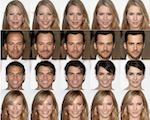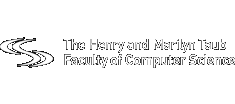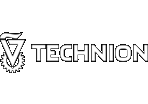Relevant publications
Dr. Chaim Baskin
Context-aware prompt tuning: advancing in-context learning with adversarial methods

Fine-tuning Large Language Models (LLMs) typically involves updating at least a few billions of parameters. A more parameter-efficient approach is Prompt Tuning (PT), which updates only a few learnable tokens, and differently, In-Context Learning (ICL) adapts the model to a new task by simply including examples in the input without any training. When applying optimization-based methods, such as fine-tuning and PT for few-shot learning, the model is specifically adapted to the small set of training examples, whereas ICL leaves the model unchanged. This distinction makes traditional learning methods more prone to overfitting; in contrast, ICL is less sensitive to the few-shot scenario. While ICL is not prone to overfitting, it does not fully extract the information that exists in the training examples. This work introduces Context-aware Prompt Tuning (CPT), a method inspired by ICL, PT, and adversarial attacks. We build on the ICL strategy of concatenating examples before the input, but we extend this by PT-like learning, refining the context embedding through iterative optimization to extract deeper insights from the training examples. We carefully modify specific context tokens, considering the unique structure of input and output formats. Inspired by adversarial attacks, we adjust the input based on the labels present in the context, focusing on minimizing, rather than maximizing, the loss. Moreover, we apply a projected gradient descent algorithm to keep token embeddings close to their original values, under the assumption that the user-provided data is inherently valuable. Our method has been shown to achieve superior accuracy across multiple classification tasks using various LLM models.
Leveraging latents for efficient thermography classification and segmentation

Breast cancer is a prominent health concern worldwide, currently being the secondmost common and second-deadliest type of cancer in women. While current breast cancer diagnosis mainly relies on mammography imaging, in recent years the use of thermography for breast cancer imaging has been garnering growing popularity. Thermographic imaging relies on infrared cameras to capture body-emitted heat distributions. While these heat signatures have proven useful for computer-vision systems for accurate breast cancer segmentation and classification, prior work often relies on handcrafted feature engineering or complex architectures, potentially limiting the comparability and applicability of these methods. In this work, we present a novel algorithm for both breast cancer classification and segmentation. Rather than focusing efforts on manual feature and architecture engineering, our algorithm focuses on leveraging an informative, learned feature space, thus making our solution simpler to use and extend to other frameworks and downstream tasks, as well as more applicable to data-scarce settings. Our classification produces SOTA results, while we are the first work to produce segmentation regions studied in this paper.
Active propulsion noise shaping for multi-rotor aircraft localization
Multi-rotor aerial autonomous vehicles (MAVs) primarily rely on vision for navigation purposes. However, visual localization and odometry techniques suffer from poor performance in low or direct sunlight, a limited field of view, and vulnerability to occlusions. Acoustic sensing can serve as a complementary or even alternative modality for vision in many situations, and it also has the added benefits of lower system cost and energy footprint, which is especially important for micro aircraft. This paper proposes actively controlling and shaping the aircraft propulsion noise generated by the rotors to benefit localization tasks, rather than considering it a harmful nuisance. We present a neural network architecture for selfnoise-based localization in a known environment. We show that training it simultaneously with learning time-varying rotor phase modulation achieves accurate and robust localization. The proposed methods are evaluated using a computationally affordable simulation of MAV rotor noise in 2D acoustic environments that is fitted to real recordings of rotor pressure fields.
Classifier robustness enhancement via test-time transformation
It has been recently discovered that adversarially trained classifiers exhibit an intriguing property, referred to as perceptually aligned gradients (PAG). PAG implies that the gradients of such classifiers possess a meaningful structure, aligned with human perception. Adversarial training is currently the best-known way to achieve classification robustness under adversarial attacks. The PAG property, however, has yet to be leveraged for further improving classifier robustness. In this work, we introduce Classifier Robustness Enhancement Via Test-Time Transformation (TETRA) — a novel defense method that utilizes PAG, enhancing the performance of trained robust classifiers. Our method operates in two phases. First, it modifies the input image via a designated targeted adversarial attack into each of the dataset’s classes. Then, it classifies the input image based on the distance to each of the modified instances, with the assumption that the shortest distance relates to the true class. We show that the proposed method achieves state-of-the-art results and validate our claim through extensive experiments on a variety of defense methods, classifier architectures, and datasets. We also empirically demonstrate that TETRA can boost the accuracy of any differentiable adversarial training classifier across a variety of attacks, including ones unseen at training. Specifically, applying TETRA leads to substantial improvement of up to +23%, +20%, and +26% on CIFAR10, CIFAR100, and ImageNet, respectively.
Physical passive patch adversarial attacks on visual odometry systems
Deep neural networks are known to be susceptible to adversarial perturbations — small perturbations that alter the output of the network and exist under strict norm limitations. While such perturbations are usually discussed as tailored to a specific input, a universal perturbation can be constructed to alter the model’s output on a set of inputs. Universal perturbations present a more realistic case of adversarial attacks, as awareness of the model’s exact input is not required. In addition, the universal attack setting raises the subject of generalization to unseen data, where given a set of inputs, the universal perturbations aim to alter the model’s output on out-of-sample data. In this work, we study physical passive patch adversarial attacks on visual odometry-based autonomous navigation systems. A visual odometry system aims to infer the relative camera motion between two corresponding viewpoints, and is frequently used by vision-based autonomous navigation systems to estimate their state. For such navigation systems, a patch adversarial perturbation poses a severe security issue, as it can be used to mislead a system onto some collision course. To the best of our knowledge, we show for the first time that the error margin of a visual odometry model can be significantly increased by deploying patch adversarial attacks in the scene. We provide evaluation on synthetic closed-loop drone navigation data and demonstrate that a comparable vulnerability exists in real data.
Contrast to divide: Self-supervised pre-training for learning with noisy labels
The success of learning with noisy labels (LNL) methods relies heavily on the success of a warm-up stage where standard supervised training is performed using the full (noisy) training set. In this paper, we identify a” warm-up obstacle”: the inability of standard warm-up stages to train high quality feature extractors and avert memorization of noisy labels. We propose” Contrast to Divide”(C2D), a simple framework that solves this problem by pre-training the feature extractor in a self-supervised fashion. Using self-supervised pre-training boosts the performance of existing LNL approaches by drastically reducing the warm-up stage’s susceptibility to noise level, shortening its duration, and improving extracted feature quality. C2D works out of the box with existing methods and demonstrates markedly improved performance, especially in the high noise regime, where we get a boost of more than 27% for CIFAR-100 with 90% noise over the previous state of the art. In real-life noise settings, C2D trained on mini-WebVision outperforms previous works both in WebVision and ImageNet validation sets by 3% top-1 accuracy. We perform an in-depth analysis of the framework, including investigating the performance of different pre-training approaches and estimating the effective upper bound of the LNL performance with semi-supervised learning.
Loss aware post-training quantization
Neural network quantization enables the deployment of large models on resource-constrained devices. Current post-training quantization methods fall short in terms of accuracy for INT4 (or lower) but provide reasonable accuracy for INT8 (or above). In this work, we study the effect of quantization on the structure of the loss landscape. We show that the structure is flat and separable for mild quantization, enabling straightforward post-training quantization methods to achieve good results. We show that with more aggressive quantization, the loss landscape becomes highly non-separable with steep curvature, making the selection of quantization parameters more challenging. Armed with this understanding, we design a method that quantizes the layer parameters jointly, enabling significant accuracy improvement over current post-training quantization methods.
CAT: Compression-aware training for bandwidth reduction
Convolutional neural networks (CNNs) have become the dominant neural network architecture for solving visual processing tasks. One of the major obstacles hindering the ubiquitous use of CNNs for inference is their relatively high memory bandwidth requirements, which can be a main energy consumer and throughput bottleneck in hardware accelerators. Accordingly, an efficient feature map compression method can result in substantial performance gains. Inspired by quantization-aware training approaches, we propose a compression-aware training (CAT) method that involves training the model in a way that allows better compression of feature maps during inference. Our method trains the model to achieve low-entropy feature maps, which enables efficient compression at inference time using classical transform coding methods. CAT significantly improves the state-of-the-art results reported for quantization. For example, on ResNet-34 we achieve 73.1% accuracy (0.2% degradation from the baseline) with an average representation of only 1.79 bits per value.
Early-stage neural network hardware performance analysis

UNIQ: Uniform noise injection for non-uniform quantization of neural networks

We present a novel method for training a neural network amenable to inference in low-precision arithmetic with quantized weights and activations. The training is performed in full precision with random noise injection emulating quantization noise. In order to circumvent the need to simulate realistic quantization noise distributions, the weight distributions are uniformized by a non-linear transfor- mation, and uniform noise is injected. This procedure emulates a non-uniform k-quantile quantizer at inference time, which adapts to the specific distribution of the quantized parameters. As a by-product of injecting noise to weights, we find that activations can also be quantized to as low as 8-bit with only a minor accuracy degradation. The method achieves state-of-the-art results for training low-precision networks on ImageNet. In particular, we observe no degradation in accuracy for MobileNet and ResNet-18/34/50 on ImageNet with as low as 4-bit quantization of weights. Our solution achieves the state-of-the-art results in accuracy, in the low computational budget regime, compared to similar models.
Single-node attack for fooling graph neural networks
Graph neural networks (GNNs) have shown broad applicability in a variety of domains. Some of these domains, such as social networks and product recommendations, are fertile ground for malicious users and behavior. In this paper, we show that GNNs are vulnerable to the extremely limited scenario of a single-node adversarial example, where the node cannot be picked by the attacker. That is, an attacker can force the GNN to classify any target node to a chosen label by only slightly perturbing another single arbitrary node in the graph, even when not being able to pick that specific attacker node. When the adversary is allowed to pick a specific attacker node, the attack is even more effective. We show that this attack is effective across various GNN types, such as GraphSAGE, GCN, GAT, and GIN, across a variety of real-world datasets, and as a targeted and a non-targeted attack.
Self-supervised learning for large-scale unsupervised image clustering
Unsupervised learning has always been appealing to machine learning researchers and practitioners, allowing them to avoid an expensive and complicated process of labeling the data. However, unsupervised learning of complex data is challenging, and even the best approaches show much weaker performance than their supervised counterparts. Self-supervised deep learning has become a strong instrument for representation learning in computer vision. However, those methods have not been evaluated in a fully unsupervised setting.
In this paper, we propose a simple scheme for unsupervised classification based on self-supervised representations. We evaluate the proposed approach with several recent self-supervised methods showing that it achieves competitive results for ImageNet classification (39% accuracy on ImageNet with 1000 clusters and 46% with overclustering). We suggest adding the unsupervised evaluation to a set of standard benchmarks for self-supervised learning.
Feature map transform coding for energy-efficient CNN inference

Convolutional neural networks (CNNs) achieve state-of-the-art accuracy in a variety of tasks in computer vision and beyond. One of the major obstacles hindering the ubiquitous use of CNNs for inference on low-power edge devices is their relatively high computational complexity and memory bandwidth requirements. The latter often dominates the energy footprint on modern hardware. In this paper, we introduce a lossy transform coding approach, inspired by image and video compression, designed to reduce the memory bandwidth due to the storage of intermediate activation calculation results. Our method exploits the high correlations between feature maps and adjacent pixels and allows to halve the data transfer volumes to the main memory without re-training. We analyze the performance of our approach on a variety of CNN architectures and demonstrated FPGA implementation of ResNet18 with our approach results in a reduction of around 40% in the memory energy footprint compared to quantized network with negligible impact on accuracy. A reference implementation accompanies the paper.
HCM: Hardware-aware complexity metric for neural network architectures

Convolutional Neural Networks (CNNs) have become common in many fields including computer vision, speech recognition, and natural language processing. Although CNN hardware accelerators are already included as part of many SoC architectures, the task of achieving high accuracy on resource-restricted devices is still considered challenging, mainly due to the vast number of design parameters that need to be balanced to achieve an efficient solution. Quantization techniques, when applied to the network parameters, lead to a reduction of power and area and may also change the ratio between communication and computation. As a result, some algorithmic solutions may suffer from lack of memory bandwidth or computational resources and fail to achieve the expected performance due to hardware constraints. Thus, the system designer and the micro-architect need to understand at early development stages the impact of their high-level decisions (e.g., the architecture of the CNN and the amount of bits used to represent its parameters) on the final product (e.g., the expected power saving, area, and accuracy). Unfortunately, existing tools fall short of supporting such decisions. This paper introduces a hardware-aware complexity metric that aims to assist the system designer of the neural network architectures, through the entire project lifetime (especially at its early stages) by predicting the impact of architectural and micro-architectural decisions on the final product. We demonstrate how the proposed metric can help evaluate different design alternatives of neural network models on resource-restricted devices such as real-time embedded systems, and to avoid making design mistakes at early stages.
Colored noise injection for training adversarially robust neural networks

Even though deep learning have shown unmatched performance on various tasks, neural networks has been shown to be vulnerable to small adversarial perturbation of the input which lead to significant performance degradation. In this work we extend the idea of adding independent Gaussian noise to weights and activation during adversarial training (PNI) to injection of colored noise for defense against common white-box and black-box attacks. We show that our approach outperforms PNI and various previous approaches in terms of adversarial accuracy on CIFAR-10 dataset. In addition, we provide an extensive ablation study of the proposed method justifying the chosen configurations.
Loss aware post-training quantization
Neural network quantization enables the deployment of large models on resource-constrained devices. Current post-training quantization methods fall short in terms of accuracy for INT4 (or lower) but provide reasonable accuracy for INT8 (or above). In this work, we study the effect of quantization on the structure of the loss landscape. We show that the structure is flat and separable for mild quantization, enabling straightforward post-training quantization methods to achieve good results. On the other hand, we show that with more aggressive quantization, the loss landscape becomes highly non-separable with sharp minima points, making the selection of quantization parameters more challenging. Armed with this understanding, we design a method that quantizes the layer parameters jointly, enabling significant accuracy improvement over current post-training quantization methods. Reference implementation accompanies the paper.
Smoothed inference for adversarially-trained models
Deep neural networks are known to be vulnerable to inputs with maliciously constructed adversarial perturbations aimed at forcing misclassification. We study randomized smoothing as a way to both improve performance on unperturbed data as well as increase robustness to adversarial attacks. Moreover, we extend the method proposed by arXiv:1811.09310 by adding low-rank multivariate noise, which we then use as a base model for smoothing. The proposed method achieves 58.5% top-1 accuracy on CIFAR-10 under PGD attack and outperforms previous works by 4%. In addition, we consider a family of attacks, which were previously used for training purposes in the certified robustness scheme. We demonstrate that the proposed attacks are more effective than PGD against both smoothed and non-smoothed models. Since our method is based on sampling, it lends itself well for trading-off between the model inference complexity and its performance. A reference implementation of the proposed techniques is provided.
Towards learning of filter-level heterogeneous compression of convolutional neural networks
Recently, deep learning has become a de facto standard in machine learning with convolutional neural networks (CNNs) demonstrating spectacular success on a wide variety of tasks. However, CNNs are typically very demanding computationally at inference time. One of the ways to alleviate this burden on certain hardware platforms is quantization relying on the use of low-precision arithmetic representation for the weights and the activations. Another popular method is the pruning of the number of filters in each layer. While mainstream deep learning methods train the neural networks weights while keeping the network architecture fixed, the emerging neural architecture search (NAS) techniques make the latter also amenable to training. In this paper, we formulate optimal arithmetic bit length allocation and neural network pruning as a NAS problem, searching for the configurations satisfying a computational complexity budget while maximizing the accuracy. We use a differentiable search method based on the continuous relaxation of the search space proposed by Liu et al. (2019a). We show, by grid search, that heterogeneous quantized networks suffer from a high variance which renders the benefit of the search questionable. For pruning, improvement over homogeneous cases is possible, but it is still challenging to find those configurations with the proposed method. The code is publicly available at https://github.com/yochaiz/Slimmable and https://github.com/yochaiz/darts-UNIQ.
Beholder-GAN: Generation and beautification of facial images with conditioning on their beauty level

Beauty is in the eye of the beholder. This maxim, emphasizing the subjectivity of the perception of beauty, has enjoyed a wide consensus since ancient times. In the digital era, data-driven methods have been shown to be able to predict human-assigned beauty scores for facial images. In this work, we augment this ability and train a generative model that generates faces conditioned on a requested beauty score. In addition, we show how this trained generator can be used to beautify an input face image. By doing so, we achieve an unsupervised beautification model, in the sense that it relies on no ground truth target images.
NICE: noise injection and clamping estimation for neural network quantization
Convolutional Neural Networks (CNN) are very popular in many fields including computer vision, speech recognition, natural language processing, to name a few. Though deep learning leads to groundbreaking performance in these domains, the networks used are very demanding computationally and are far from real-time even on a GPU, which is not power efficient and therefore does not suit low power systems such as mobile devices. To overcome this challenge, some solutions have been proposed for quantizing the weights and activations of these networks, which accelerate the runtime significantly. Yet, this acceleration comes at the cost of a larger error. The uniqname method proposed in this work trains quantized neural networks by noise injection and a learned clamping, which improve the accuracy. This leads to state-of-the-art results on various regression and classification tasks, e.g., ImageNet classification with architectures such as ResNet-18/34/50 with low as 3-bit weights and activations. We implement the proposed solution on an FPGA to demonstrate its applicability for low power real-time applications.
Streaming architectures for large-scale quantized neural networks on an FPGA-based dataflow platform
Deep neural networks (DNNs) are used by different applications that are executed on a range of computer architectures, from IoT devices to supercomputers. The footprint of these networks is huge as well as their computational and communication needs. In order to ease the pressure on resources, research indicates that in many cases a low precision representation (1-2 bit per parameter) of weights and other parameters can achieve similar accuracy while requiring less resources. Using quantized values enables the use of FPGAs to run NNs, since FPGAs are well fitted to these primitives; e.g., FPGAs provide efficient support for bitwise operations and can work with arbitrary-precision representation of numbers. This paper presents a new streaming architecture for running QNNs on FPGAs. The proposed architecture scales out better than alternatives, allowing us to take advantage of systems with multiple FPGAs. We also included support for skip connections, that are used in state-of-the art NNs, and shown that our architecture allows to add those connections almost for free. All this allowed us to implement an 18-layer ResNet for 224×224 images classification, achieving 57.5% top-1 accuracy. In addition, we implemented a full-sized quantized AlexNet. In contrast to previous works, we use 2-bit activations instead of 1-bit ones, which improves AlexNet’s top-1 accuracy from 41.8% to 51.03% for the ImageNet classification. Both AlexNet and ResNet can handle 1000-class real-time classification on an FPGA. Our implementation of ResNet-18 consumes 5× less power and is 4× slower for ImageNet, when compared to the same NN on the latest Nvidia GPUs. Smaller NNs, that fit a single FPGA, are running faster then on GPUs on small (32×32) inputs, while consuming up to 20× less energy and power.




